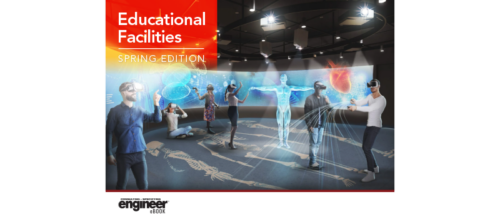College, university building electrical and power system design
College and university campus buildings have a lot going on—classes, research, dining, and sleeping. Electrical and power systems—including standby, emergency, and backup power—are key components.
Participants
Robert Garra, PE, CDT, Vice president, electrical engineering, Cannon Design, Buffalo, N.Y.
Randy Hassler, PE, LEED AP, Principal, McClure Engineering, St. Louis, MO
Andrew Slater, PE, Electrical engineer, HGA Architects and Engineers, Milwaukee, WI
CSE: What’s the one factor most commonly overlooked in electrical systems in such buildings?
Slater: The arc flash, short circuit, and coordination study are commonly overlooked items in an electrical system. The study is essential to ensuring any outages are limited to a small area. The arc flash helps keep maintenance staff aware of the proper safety protocols that are needed to maintain particular distribution equipment.
Hassler: Campus buildings are typically designed for 50- to 100-year life. Designing for routine maintenance and with end-of-life replacement should be a consideration. For example, feed-through panelboards require de-energizing multiple panels for maintenance and are more difficult to replace at end of life compared to panels that are fed individually. A building often goes through multiple partial renovations during its life span, so keeping the electrical distribution tied to the building core with elevators, bathrooms, and mechanical rooms provides a greater chance that it will not require relocation due to a minor renovation.
CSE: Describe a recent project in which you had complex metering and sub-metering in a building.
Hassler: Building energy usage and sub-metering on HVAC equipment is commonly requested. Numerous electrical sub-meters are required for U.S. Green Building Council LEED measurement and verification; however, if planned for early in the electrical distribution design, the metering can be simplified by segregating loads on different panels.
Slater: The most recent project that had a complex metering system was actually for an industrial facility. The system included the main primary voltage meter, the secondary meter located at the main circuit breaker, and individual branch feeder sub-meters.
CSE: How do you balance the need for reliable power with the desire for efficiency and sustainability?
Garra: This is a tough balance. We need to put public safety first and then try to make the systems as efficient as possible. The conservative nature of NFPA 70: National Electrical Code requires engineers to size equipment in a manner that usually results in oversized equipment. Collaboration with end users or steering them toward energy-efficient, U.S. EPA Energy Star-rated equipment is an important option. Counting watts to maximize the efficiency of the electrical infrastructure helps maintain the balance of efficiency and safety. In this case, we can use the lower power draws in our calculations, thus lowering the required system capacities. Using LED luminaires or using advanced lighting control systems helps reduce unnecessary and wasteful energy usage.
CSE: What type of backup or standby power systems have you specified into colleges and universities recently?
Hassler: Engine generators for loads that need long duration backup, such as research freezers, growth chambers, vivarium HVAC, etc. In research facilities, owners are requesting approximately 2 W/sq ft of standby power allowance for lab use. Consideration is also required for cooling to prevent equipment from overheating. Uninterruptable power supply (UPS) for loads that are sensitive to any fluctuation in power, such as computers, mass spectrometers, etc. It would not be uncommon to have a dedicated UPS for a specific piece of equipment. When a UPS system is used for multiple pieces of equipment, then scalable UPS systems are an attractive option that can be modified as equipment is added, removed, or replaced. Maintenance bypass switches on automatic transfer switch (ATS) and UPS to allow for routine service are usually prudent. It should be discussed who will test and maintain the equipment, pay for service contracts, and pay for ongoing maintenance (i.e., facilities, the department).
Do you have experience and expertise with the topics mentioned in this content? You should consider contributing to our CFE Media editorial team and getting the recognition you and your company deserve. Click here to start this process.


